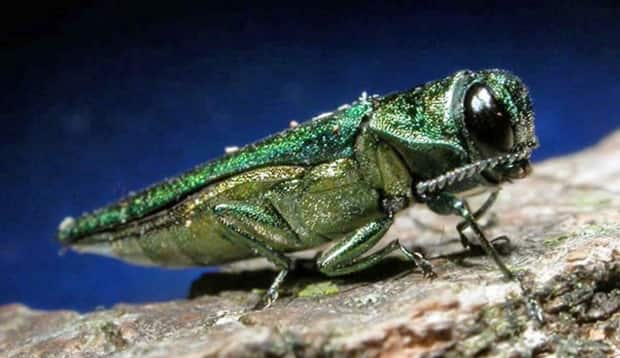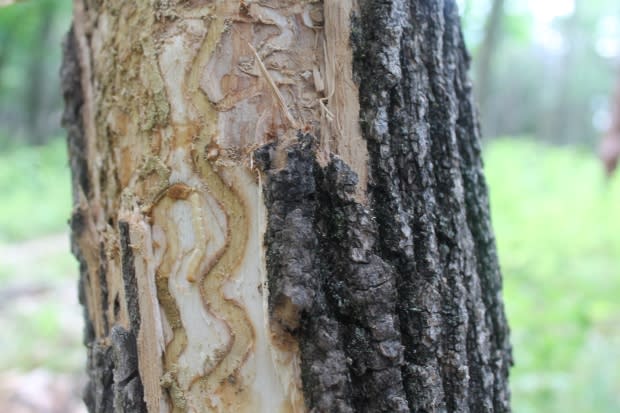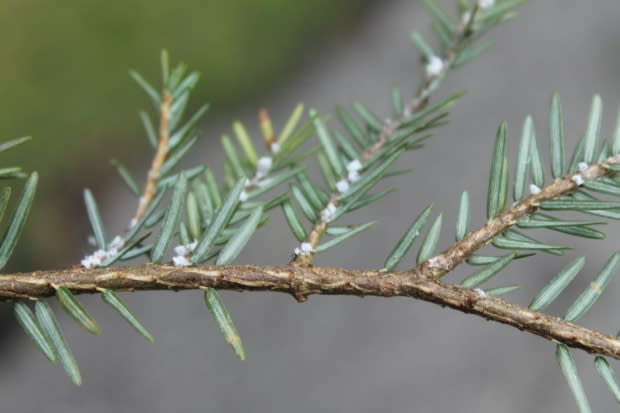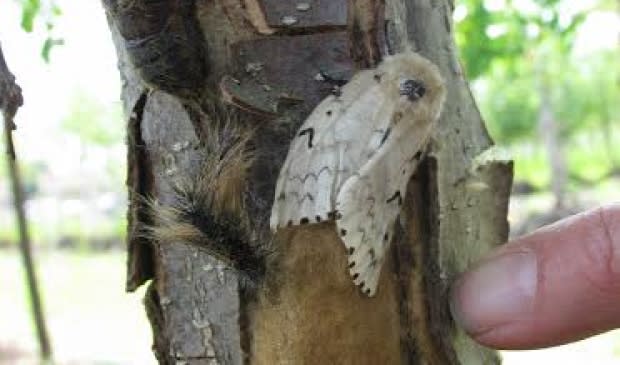3 invasive insects that could wreck your backyard
It's spring — the deck furniture is back out, people are in their gardens again and thinking about larger forays into nature. It's also a good time to learn about some of the unwelcome critters you may encounter out there.
When invasive species arrive in Canada, often transported accidentally by humans, they can multiply quickly without natural predators to keep them in check. They can also kill or displace native plants and animals in a region and reduce biodiversity.
The Canadian Food Inspection Agency (CFIA) is responsible for monitoring invasive species. It estimates these pests cost the Canadian economy around $30 billion per year.
The CFIA and local authorities rely on citizens to report sightings of invasive species in areas where they may not have been spotted before. You can click here to find out where to report suspected invasive species sightings in your province.
David Nisbet, partnership and science manager for the Invasive Species Centre, a non-profit based in Sault Ste. Marie, Ont., that works to prevent the spread of these critters in Canada, identified three insect species you should watch out for while gardening, camping or enjoying the cottage this year.
Emerald ash borer
The emerald ash borer is a bright green beetle from Asia that has been spotted all over Ontario, including as far north as Thunder Bay, and in large parts of the Maritimes. In recent years, the pest has been seen in Winnipeg.
Look for ash trees that are losing leaves with damaged, cracked bark. Also look for trees with lots of woodpeckers; they love eating emerald ash borer larvae.

These beetles are extremely dangerous for trees. Infested trees have a 99 per cent mortality rate. Ontario municipalities spend $38 million annually on emerald ash borer management. Ottawa alone spends $6 million.
The larvae live under the bark, eating the wood of the North American ash tree. In late spring, the adults emerge from the tree, leaving distinctive D-shaped exit holes. If you peel off the bark of an infested tree, you can see distinctive S-shaped tracks in the wood.
Ash trees commonly line urban streets. If you have ash on your property, it's important to monitor your trees for any change to their health, Nisbet said.
The beetles mainly move from place to place with the help of humans, hidden in firewood. To help prevent the spread, buy firewood locally instead of transporting it from elsewhere. If you're done at a campsite and have leftover wood, leave it there instead of taking it home.
Hemlock woolly adelgid

The hemlock woolly adelgid is a small insect native to Asia. There are large infestations in southern Nova Scotia, and sightings in Toronto and farther south in Ontario's Niagara Gorge region.
Their only host plant is the eastern hemlock, which is found in old-growth forests throughout southern and central Ontario, the Maritimes and southern Quebec. They are also common as hedges and ornamental trees.
Adults are too small to see, but infestations are recognizable this time of year by their egg sacs, which look like small woolly masses resembling the end of a Q-Tip. They are found on the undersides of hemlock branches at the base of the needle. Later in the season, look for needle loss, as the adult insects eat the tree at the base of the needles.
Because the woolly masses might be very high up in the canopy, the Canadian Forest Service detects these pests by using a slingshot to fire a Velcro-covered racquetball up to the top branches. If the ball comes down with woolly "cotton" stuck to it, the tree is infested with hemlock woolly adelgid.
They can be spread by humans transporting firewood. The adults and larvae can also get stuck to a bird's feet and travel a long way, or travel short distances with a strong wind. Infestations are possible along bird migration routes or along rivers where birds might stop.
"Be aware of what species of trees you have on your property," Nisbet said. "If you're a homeowner with a lot of hemlock trees then you should be aware of hemlock woolly adelgid."
Gypsy moths

The gypsy moth has been an invasive pest in Canada for a long time. It was first documented in Ontario back in the 1800s. They often arrive through international shipping, laying their egg masses on the outside of ships and shipping containers. Port cities like Vancouver are especially vulnerable to gypsy moth infestations.
Gypsy moths have been spotted in Ontario, B.C. and the Maritimes. When out in the yard, keep an eye out for their distinctive yellowish, fuzzy egg masses, which are approximately four centimetres in diameter. The egg masses can be found on any hard surface such as trees, deck furniture, cars and children's toys. If egg masses are found, they should be scraped off to kill the moths. Gypsy moths also like to lay eggs in piles of firewood.

After they hatch, the gypsy moth's caterpillars can quickly strip a tree of its leaves, though they don't always kill the tree. The caterpillars eat from a huge range of host trees including hardwoods like oak, maple and birch. They can be identified by the distinctive pattern of six pairs of red dots and five pairs of blue dots on their backs.
If you see any major changes in the health of a tree, contact a local arborist to come take a look, Nisbet said.
"It may not be an invasive species, but it's good to have it checked out."


